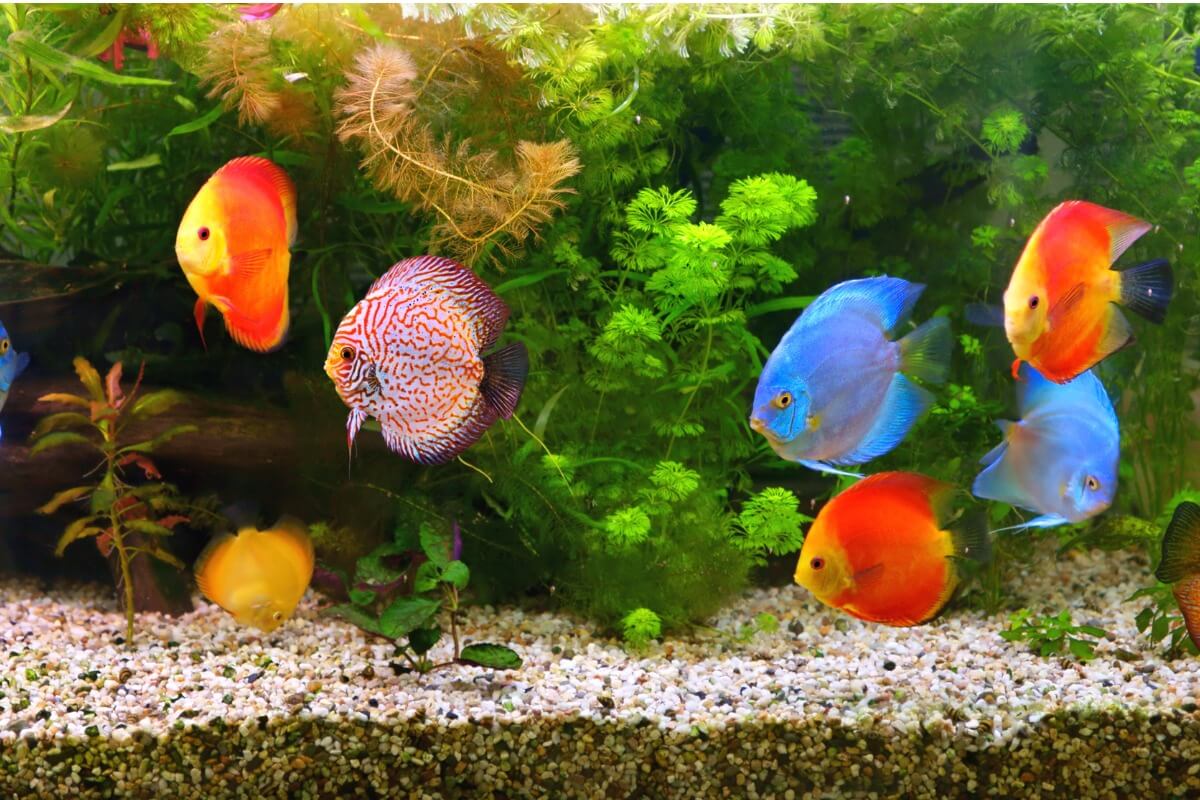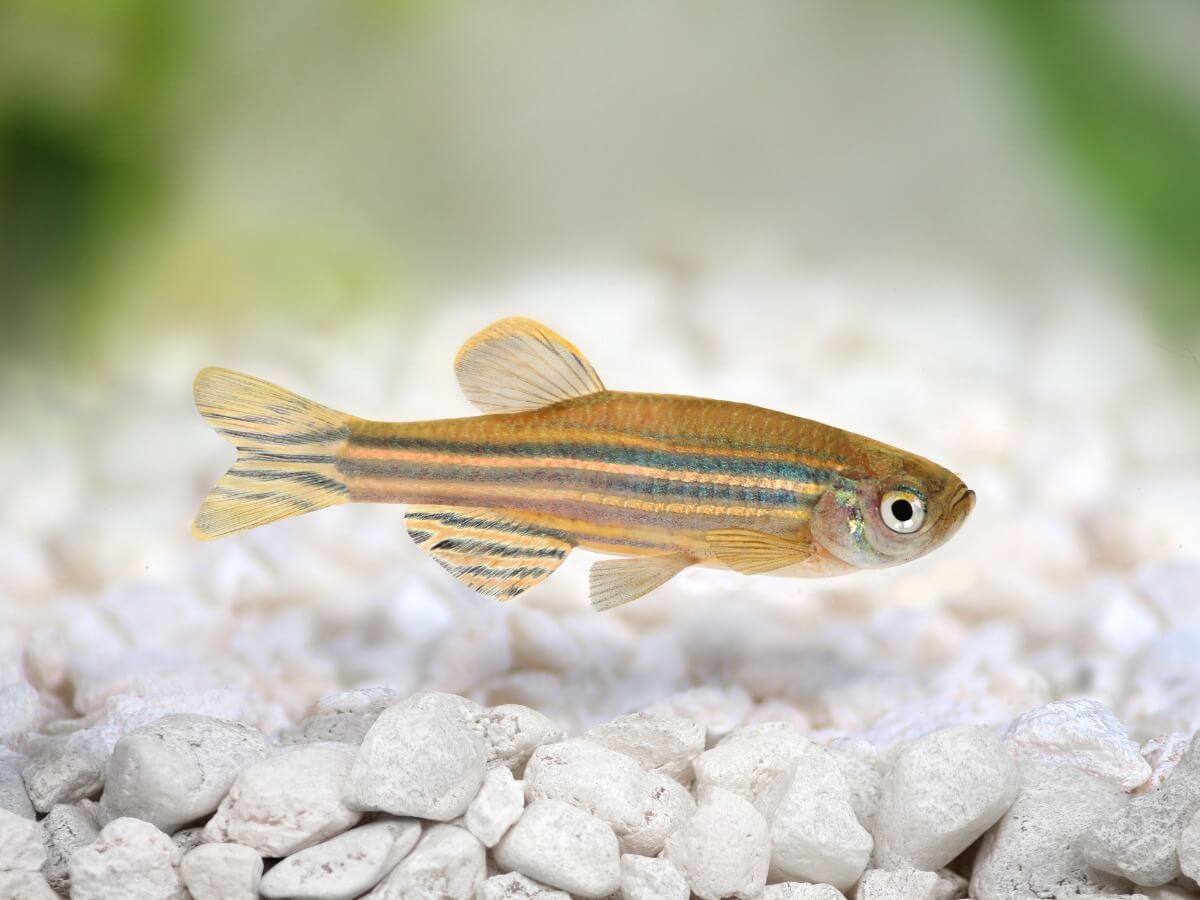How Many Fish Can You Put in Your Aquarium?


Written and verified by the biologist Samuel Sanchez
Knowing exactly how many fish you can put in your aquarium is essential in order for you to maintain it well in the long term. Overcrowded tanks are doomed to failure, as it’s only a matter of time before chemical imbalances, excessive organic matter deposition and chronic stress occur in the tank. In the end, some fish will die as a consequence.
For reasons that speak for themselves, overpopulation in the aquarium is something to be avoided at all costs. Here are some facts and figures to show you the general rules of thumb when it comes to the number of fish in your tank. Read on!
What should I look out for when setting up my aquarium?
Knowing how many fish you can put in your aquarium is essential before you set it up, but there are many other parameters to take into account. For example, there’s little point in calculating a standardized figure for the space each fish will occupy if the habitat isn’t adjusted to the requirements of the species in the first place.
Once you know the requirements of each member of the tank, ask yourself the following questions:
- How much usable space do species need? Some fish are large and move around very little, while other small fish require several ecosystem areas to carry out their life cycle. Don’t just look at the size of the animal, but at its life requirements and the space it needs to carry out its instincts.
- Are the fish compatible: All members of the tank must be compatible chemically and behaviorally. For example, a species that requires a temperature of 20°C (68°F) will never live well with another species that requires 28°C (82°F). The same would be true for a carnivorous fish 10 centimeters long (4 inches) and a school of small specimens.
- What is the filtering system of my aquarium like? No matter how well you calculate the spaces for each specimen, an aquarium without a filtering system is doomed to failure. Find out about the power of your filters, as this will also define the number of members the tank can hold.
Once you’re satisfied that everything is correct, then start setting up the aquarium and cycle it for 1-2 months before introducing the first fish. The process is slow and expensive, but always worth it in the end.

How many fish can you put in your aquarium?
The answer to this question is always variable. Each species has its own requirements and, depending on the life stage of the specimen, the size of its environment can multiply by several magnitudes at any given time. However, there are a number of rules of thumb that can help you make an estimate.
In general, first-time keepers follow the estimate that each fish requires 1 gallon per inch of body length. Translated into other units, this would mean that each fish needs 4 liters (7 pints) of water volume in the tank for every 2.5 centimeters (1 inch) of body length. This way of measuring is very much a rough calculation, as it only takes into account sizes.
Another way of measuring is based on the calculation of the surface of the aquarium, because in the layer that separates the aqueous medium from the air a very important gas exchange takes place. Taking this parameter into account is essential, as the fish can breathe thanks to the O2 dissolved in the water and the system’s capacity to release CO₂.
According to general estimates, an aquarium can hold 1 centimeter (0.4 inches) of fish space for every 12 square centimeters (1.9 square inches) of surface area. With this in mind, the basic figures are as follows:
- Tropical fish: 26 square centimeters (4 square inches) per centimeter of fish.
- Cold water fish: 62 square centimeters (9.6 square inches) per centimeter of fish.
As you can see, the figures are always higher than the standard. For example, cold water specimens of the species Carassius auratus (golden carp or goldfish) need much more space than tropical fish of the same size, as they have a more bulging digestive system, eat more and therefore produce more waste.
Advanced estimates
As the professional website Aquarium co-op points out, some chemical estimates are somewhat more precise than the above. In this case, it’s best to monitor nitrate levels once the tank is set up and make sure they don’t exceed 40 ppm.
If this rule holds true, it’s easy to assume that the members aren’t producing enough waste to collapse the tank’s ecosystem. Although there may be problems on other fronts, the danger of chemical imbalance from overpopulation is ruled out.
Each species has a specific parameter
Although the above guide may help you in a general way, it should be noted that knowing how many fish you can put in your aquarium will depend a lot on the number of different species you want to keep in it. Each fish has specific parameters that must be met, as you’ll see in the following list:
- Guppies require an additional 5 liters (8.8 pints) for each new fish in the tank. The basal volume of the aquarium for a group of 6 will be 40 liters (70 pints).
- Goldfish need about 40 liters per fish. A pair should therefore ideally be housed in a tank with a volume of 100 litres.
- A betta or Siamese fighting fish needs a tank of at least 10-15 liters (17 to 25 pints) to do well. It should always be kept alone.
In addition to all of the above, it’s worth noting that many small fish don’t do well in nano aquariums, as they’re schooling species and require ample space to carry out their natural behavior. This is the case with the zebra danio (Danio rerio) – even if an adult specimen measures 2 to 4 centimeters, the species should be kept in groups of at least 6 specimens.
So, it isn’t recommended to put a group of zebra danios (6 or more) in an aquarium with a volume of less than 60-80 liters (13 to 17 gallons)

As you can see, the answer to the question of how many fish you can put in your aquarium isn’t an exact science. Although there are a number of general parameters to guide you, it’s always best to get to know each species and take into account their individual requirements.
All cited sources were thoroughly reviewed by our team to ensure their quality, reliability, currency, and validity. The bibliography of this article was considered reliable and of academic or scientific accuracy.
- How to determine the right stocking level, Aquarium co-op. Recogido a 28 de septiembre en https://www.aquariumcoop.com/blogs/aquarium/how-many-fish
- Guidelines for Stocking Your Aquarium, The Spruce Pets. Recogido a 28 de septiembre en https://www.thesprucepets.com/amount-of-fish-and-aquarium-size-1378335
This text is provided for informational purposes only and does not replace consultation with a professional. If in doubt, consult your specialist.